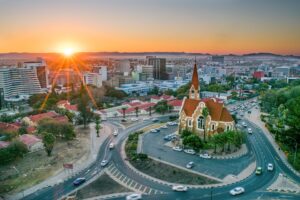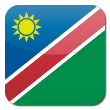The NamibRand Nature Reserve is a model for private conservation in southern Africa as it demonstrates holistic biodiversity conservation balanced with financial sustainability. Low-impact ecotourism is a means towards sustaining our conservation efforts through park fees. Five tourism concessions have been awarded, that each pay a daily, per-bed fee to the Reserve. The funds generated through these park fees enable the Reserve to be financially self-sustaining.
History
The Reserve originated in 1984 as the dream of J.A. Brückner (R.I.P. 08 December 2016) to extend desert frontiers by integrating a large number of former livestock farms and developing a wildlife sanctuary. To date, seventeen former livestock farms have been rehabilitated into a single continuous natural habitat. Recognising the importance of wilderness areas, the NamibRand Nature Reserve has exclusively set aside more than 15% of its total area for wilderness.
The NamibRand Nature Reserve was registered as a non-profit private nature reserve in 1992. All landowners belonging to the Reserve have signed agreements and adopted a constitution which sets the land aside for conservation – now and in the future. The Reserve is financially self-sustaining mainly through high quality, low impact tourism.
Aims
The Aims of the NamibRand Nature Reserve are:
To conserve for the benefit of future generations and to protect the sensitive and fragile environment and its rich biodiversity;
To create a nature reserve with a healthy and functioning ecosystem, providing a sanctuary for flora and fauna and to facilitate seasonal migratory routes in partnership with neighbours (National Parks, etc.);
To promote sustainable utilisation – through ecologically sustainable and high-quality level tourism products and other projects; and
To achieve a commercially viable operation to ensure continuance and financial independence.
Ecology
Four distinct habitats are found on the Reserve: dunes and sandy plains, inselbergs and mountains, gravel plains, and sand and gravel plains interface. The predominant large mammals on the Reserve are Oryx gazelle (gemsbok or oryx) and Antidorcas marsupialis (springbok). The latest game census indicated that there were 3,200 oryx and 12,400 springbok on the Reserve. Other large mammals include kudu, Hartman’s and Burchell’s zebra, giraffe, klipspringer, steenbok, hartebeest and baboon. Predators include leopard, spotted and brown hyena, black-backed jackal, aardwolf, bat-eared fox, Cape fox, African wildcat, caracal and genet. To date more than 150 bird species have been identified, while work is still in progress on the inventory of rodents, reptiles, amphibians, invertebrates and plants.
Resource Management
Innovative approaches to resource management help ensure that this critical area bordering on the Namib-Naukluft National Park is effectively conserved. The Reserve maintains a conservation policy of minimal interference with constant monitoring, implemented through an environmental management plan. A new monitoring system has been introduced which includes population census methods. The Reserve is a member and contributor to the Southern African Avi-Faunal Atlas and the Large Carnivore Atlas of Namibia. Local outreach efforts focus mainly on predator-livestock management on neighboring properties.


